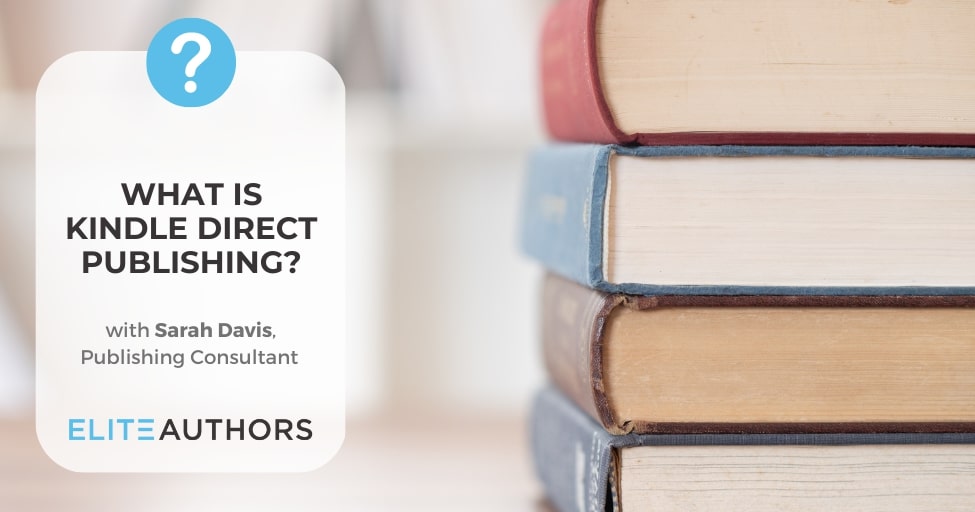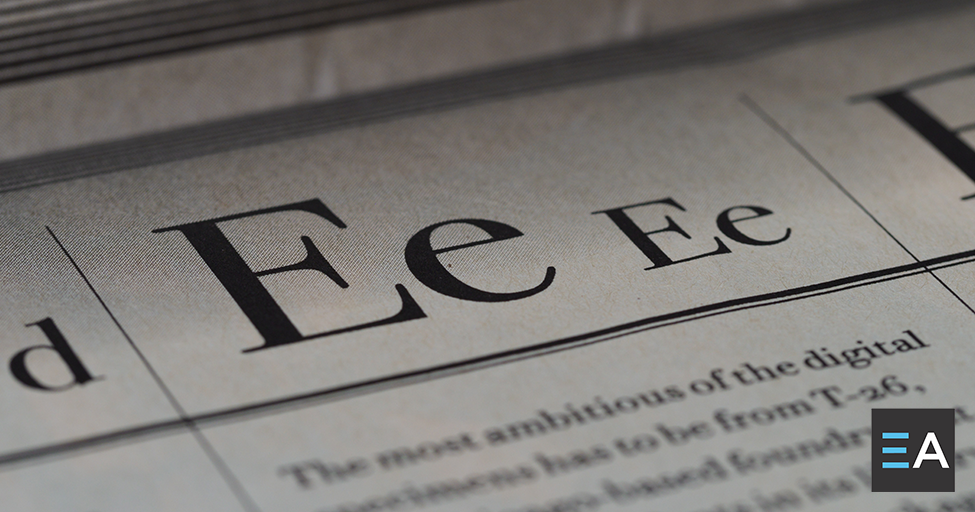
Use the Mind Mapping Method for Your Book Ideas
January 10, 2023
Elite Answers: What is Kindle Direct Publishing?
February 1, 2023Best Fonts for Books: Layout, Size, Spacing and More
Fonts are everywhere. Every single typed word you’ve ever read is in some sort of font! You’re probably aware that you can choose different fonts in word processing software such as Microsoft Word or Google Docs. What you might not know is that some fonts are better for books than others!
Not all fonts are created equal. Some are great for formal writing, like academic essays or journals—and those likely aren’t the best fonts for children’s books, graphic novels, and other casual literature. Different fonts convey different moods. So when you choose a font for your manuscript, you should consider your genre, theme, and overall book design.
So what are the best fonts for books? And what is the best font for your book in particular? The first step in choosing the ideal font for your manuscript is learning what a font is and what options are available to you.
What Is a Font?
Put simply, a font is a typeface. Fonts dictate the size and shape of the letters and numbers in any content that’s been typed on a computer or typewriter. They might be structured and formal, or they could be more decorative and playful.
There are many different types of fonts—and exploring some of the various categories can help you narrow down the best font for your book. As you learn about new fonts, ask yourself which typefaces would look best for the pages of your book and your book jacket. Chances are you’ll come across a few fonts that you can easily envision on the inside and outside of your masterpiece!
What are the different types of fonts?
Depending on what word processing program you use, you’ll likely have a different variety of fonts to choose from. There are hundreds of fonts out there, and if your software doesn’t have your favorite one, you might be able to add a font to your program!
Fonts may be classified differently in each word processing software. However, here are a few standard types of fonts to familiarize yourself with as you research the best fonts for books:
- Decorative fonts. These are highly stylized and unique typefaces. They’re meant to grab viewers’ attention, so they’re often used for company logos. Decorative fonts might have a mix of uppercase and lowercase letters, and some characters might be slightly askew. In general, these are not good fonts for the pages of a novel, though they could work well for your title. And they’re some of the best fonts for children’s books!
- Display fonts. In general, display fonts are great for headings but don’t scale down very well. If you find some display fonts that you really want to incorporate into your book, consider using them for either your title or your chapter titles. Then pick a more standard font for the majority of your pages that complements the display fonts.
- Handwritten fonts. You might guess that handwritten fonts mimic a person’s handwriting. And you’d be right! Some handwritten fonts are in cursive, and others are in a less-formal printed handwriting style. These can be great fonts for children’s books or books involving humor, since they’re a little more personalized than a standard typeface.
- Monospaced fonts. In these fonts, all characters take up the same amount of horizontal space. In other words, all of the letters and numbers in the font are the same width. These are often serif fonts and might remind you of the characters that an old typewriter would produce.
There are many fonts that fall into each of these categories. On top of choosing the font itself, you can often stylize your typeface too!
How do you stylize fonts?
In addition to having your choice of font, many typefaces can also be stylized. Maybe you want to show emphasis or list a formal book title in your manuscript, which will require you to adjust the font accordingly. One of the main ways to stylize a font is by bolding it. You might bold a few words—or even a full sentence—to set it apart from the rest of a paragraph so that your reader knows it’s important. Just remember to use bolded fonts sparingly or else your audience won’t know what’s actually important!
You can also italicize your font. Italics are often used to show emphasis, convey that you’re quoting a song or a poem, or cite a source that you’ve referenced in your book. Similarly, the third type of font stylization is underlining. While underlines can be used to emphasize a word or a phrase, they’re also frequently used to cite a source. If you’re writing a nonfiction book that requires citations and a bibliography, be sure to use the appropriate citation style for your manuscript.
Not all fonts can be stylized. Many handwritten fonts, decorative fonts, and display fonts don’t provide options to be bolded, italicized, or underlined. This is just another thing to keep in mind as you look at the best fonts for your book.
The Best Fonts for Books
There’s no universal right or wrong font for any book. However, since the fonts you use for your book jacket and pages help set the tone for your story, you should choose the best typeface for your particular manuscript. Three of the most popular kinds of fonts across the book industry are serif fonts, sans serif fonts, and decorative fonts.
Serif fonts
Serif fonts are classic. They’re named after the serif, or small detail, on many of the letters. Although they might remind you of old newspapers or the first essay you typed in school, they’re actually still very commonly used. Here are a few examples of serif fonts:
- Courier: The sky is blue.
- Georgia: The sky is blue.
- Times New Roman: The sky is blue.
As you can see, many of the letters have small details that other fonts don’t include. For example, the edges of the capital T hang down, and the lowercase y has horizontal lines at the top in each font. If you feel that serif fonts aren’t the best fonts for your book, you can check out some sans serif fonts.
Sans serif fonts
Sans serif fonts do not include the small details that serif fonts have. In other words, they are without serifs, or sans serif. They were created in part because they can sometimes be easier to read than serif fonts. In printing, for instance, ink might not sit on the paper as cleanly as the printer wants it to. This can cause the details on serif fonts to bleed together and become less legible.
Here are a few examples of common sans serif fonts:
- Arial: The sky is blue.
- Helvetica: The sky is blue.
Both serif fonts and sans serif fonts are great for the pages of a novel. However, if you’re trying to pick a typeface for your book cover or are looking for the best fonts for children’s books, you might want to look at a few decorative fonts.
Decorative fonts
You’re already aware that decorative fonts are highly stylized and sometimes used for company logos. You’ve likely also seen them used as headings on websites or in magazines. Some authors like to use them for their title or even their chapter titles to add a little pizzazz to their books!
Decorative fonts are constantly evolving, and graphic designers are always coming up with new, creative typefaces. You might have seen these popular decorative fonts in your readings or as you’ve surfed the web:
- Broadway: The sky is blue.
- Stencil: The sky is blue.
Regardless of which typeface you choose, the best fonts are the ones that complement your book’s genre and theme.
How to pick a font that complements your book’s genre and theme
The font or fonts that you choose for your book say a lot about the book itself. Think about when you’ve browsed your local bookstore, library, or e-book retailer. Some book covers catch your eye thanks to an interesting picture or illustration—and a well-chosen font! For example, you might come across a war novel that uses a stencil-styled font or a romantic story with a pretty script or cursive font. The typefaces help convey the story’s theme, so it’s important to pick the best ones!
In order to pick a font that complements your book’s genre and theme, first decide whether you want one font or multiple fonts. If your title has a subheading, you can pick two fonts that go well together. And if you want your book cover to be less text heavy, a single font will suffice.
Second, think about what you want your font to communicate to your target audience. If your book is humorous, choose a lighthearted font with some personality. Decorative fonts and display fonts might be good choices! And if your book is more serious, start with serif fonts or typefaces that you might have seen in other publications that are similar to your manuscript.
Finally, keep in mind that the best fonts for books are legible, particularly in a small format. Your book’s title should be legible in a thumbnail image so that potential readers who find your book online can easily read it. If your target audience can’t instantly read your title, they might scroll right by your book!
Your book cover is your chance to make a great first impression on your target audience. So be sure to choose an interesting, legible font that conveys your book’s theme—and that will help readers find your book!
Choosing the Best Font Will Help Your Book Get Noticed!
Choosing the best font for your book should be fun! However, with all the fonts out there, it’s easy to become overwhelmed. That’s where Elite Authors comes in. We offer a variety of services, including book formatting and cover design, to make sure your font helps your book get noticed. Contact our team today!



